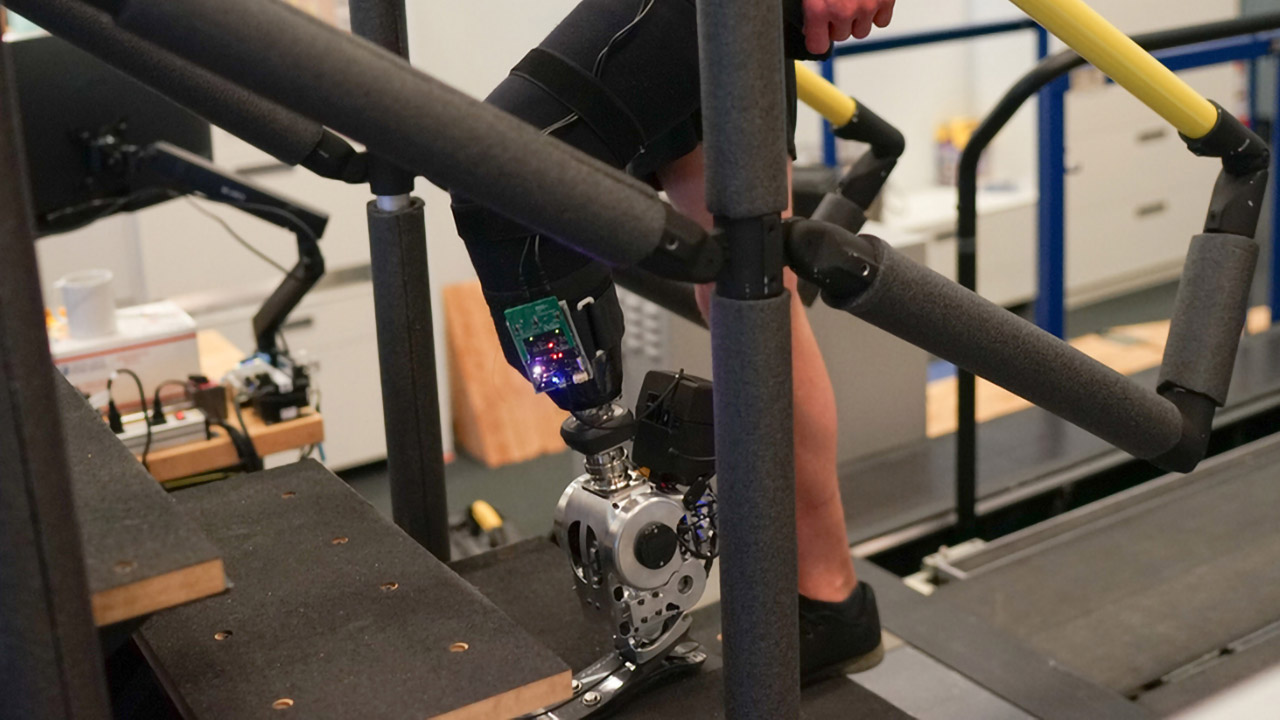
Photo credit: Hugh Herr and Hyungeun Song
MIT researchers teamed up with Brigham and Women’s Hospital to develop a prosthetic leg fully driven by the body’s own nervous system. This surgical amputation procedure reconnects muscles in the residual limb, enabling patients to receive “proprioceptive” feedback about where their prosthetic limb is in space.
All test subjects used the same type of bionic limb, or a powered ankle as well as electrodes that can sense electromyography (EMG) signals from the tibialis anterior the gastrocnemius muscles. These signals are then transmitted robotic controller that helps the prosthesis calculate how much to bend the ankle, how much torque to apply, or how much power to deliver, using predefined gait algorithms.
- Build your own awesome, wearable mechanical hand that you operate with your own fingers.
- No motors, no batteries — just the power of air pressure, water, and your own hands!
- Hydraulic pistons enable the mechanical fingers to open and close and grip objects with enough force to lift them. Every finger joint can be adjusted...

This is the first prosthetic study in history that shows a leg prosthesis under full neural modulation, where a biomimetic gait emerges. No one has been able to show this level of brain control that produces a natural gait, where the human’s nervous system is controlling the movement, not a robotic control algorithm,” said Hugh Herr, a professor of media arts and sciences, co-director of the K. Lisa Yang Center for Bionics at MIT.







